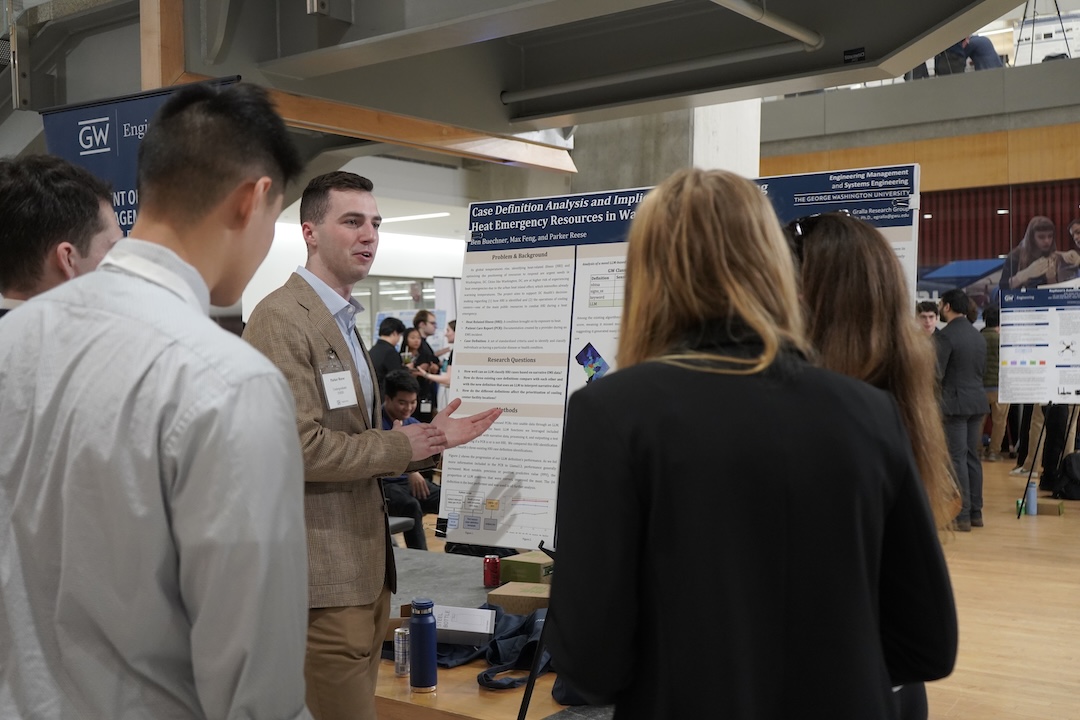Allocating Heat Emergency Resources in Washington, D.C.

Project Team
Ben Buechner
Max Feng
Parker Reese
Project Sponsor(s)
DC Health
LMI Consulting
Instructor(s)
Dr. Eric Dano, EMSE, GW Engineering
The rising incidence of heat-related illness (HRI) in urban environments like Washington, D.C. underscores the need for effective public health strategies to mitigate these risks. DC Health tracks the number of HRI-related Emergency Medical Services (EMS) incidents to determine the ongoing need for such mitigation strategies. However, accurately identifying and classifying HRI cases from EMS data presents a challenge because there is no one true HRI case definition. A case definition might indicate an HRI incidence that inaccurately biases certain areas of the District and underreports others. Additionally, the reported HRI incidence informs the DC Homeland Security and Emergency Management Agency’s (HSEMA) activation of cooling centers—public infrastructure such as libraries, community centers, and spray parks—as a resource to combat declared heat emergencies. Their location is determined in part based on DC Health’s mapping and analysis of HRI incidence. Thus, an accurate case definition is important to appropriately allocate HRI mitigation resources. This project evaluates the performance of existing case definition methods, develops a new case definition leveraging LLMs, and highlights any contrasting implications for cooling center activation.
Who experiences this problem in the world?
D.C. residents and tourists
Why is this problem important?
The significance of this project is twofold. First, our project intends to support DC Health in improving its tracking of HRI, and in turn, DC’s prioritization of cooling centers, the primary mitigation resources. Developing a new LLM-based definition allows them to leverage information from the narrative portion of PCRs. This LLM-based definition is novel because none of DC Health’s current definitions interpret a text-based portion of a PCR. While their keyword definition does use word matching, that definition would not differentiate between a patient who is “hot” from a fever or from being exposed to environmental heat. Second, our project intends to evaluate the performance of an LLM on this type of task, indicating its feasibility in processing other operational and narrative data in the public sector. DC Health and others have already done research and exploratory data analysis (EDA) on the drivers of HRI sensitivity and exposure [5]. However, they have not published extensive research on the case definitions themselves and how they can guide their heat emergency management policies.
What is the coolest thing about your project?
An analysis of a novel LLM-based definition found better performance than traditional case definitions for HRI. Signs and Symptoms, a definition based on ICD-10 codes found in the structured data fields in PCRs, consistently vastly overcounted HRI. The NHTSA definition, while featuring strong precision, significantly undercounted and lacked specificity. The keyword-matching definition had a more balanced success rate, but still underperformed when compared to the LLM definitions’ Precision and Recall.
Describe any specific technical challenges:
Working with GWU HPC, transferring data inputs and outputs through disparate systems, and linear optimization.

